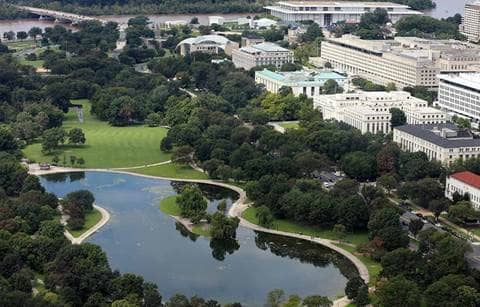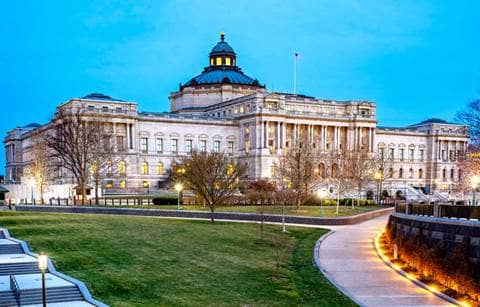The government shutdown dragged on from the beginning of October into November, breaking records along the way, before finally being resolved on November 13 through a short-term funding bill. The end of the shutdown was welcoming news for taxpayers that had increasingly been feeling the impact on Internal Revenue Service (IRS) operations. The shutdown’s resolution did nothing, however, to resolve deep policy divisions over the future of the Affordable Care Act (ACA) premium tax credits at the heart of the funding crisis.
This month, we examine the dynamics underlying the shutdown and analyze its broader tax policy implications going forward. We also dive into Section 1202, a key gain exclusion provision that was significantly reinvigorated in a taxpayer-favorable way by the One, Big, Beautiful Bill Act (OBBB). Now is also a great time to explore some exciting new estate planning opportunities created by the OBBB, so we review several that tie the OBBB’s recent increases to exemption amounts to some established planning techniques.
Read on for a roundup on some of the most significant recent tax policy developments.
- The end of the government shutdown and what comes next
- Section 1202 planning and entity choice
- Revisiting estate planning
The end of the government shutdown and what comes next
The government shutdown is finally over, and we now have clarity on the terms of the deal that ended it. President Trump signed a short-term funding package into law on November 13, immediately after the House voted it through to his desk by a margin of 222-209. The funding package includes a continuing resolution (CR) that will fund the government at the previous fiscal year’s levels through January 30. It also includes a three-bill appropriations package. Significantly, none of those three bills appropriate funds to Treasury or the IRS. More on that below. For perspective, Congress needs to pass 12 appropriations bills — sometimes grouped together into a single omnibus funding package — to fully fund the government. So, Congress has plenty of work left to do.
How we got here: Pain points lead to a resolution
The funding legislation signed into law quickly followed a breakthrough in negotiations in the Senate. That breakthrough quickly warmed shutdown dynamics in Washington that, for almost a month and a half, seemed frozen in place.
Last month, with the failed votes on the House-passed continuing resolution (CR) already becoming repetitive, Senate Majority Leader John Thune signaled a shift in strategy: Try to pass standalone funding bills and, to get a critical number of Democrats on board with this strategy, agree to a vote on a one-year extension of the ACA premium tax credits. This shift was partly driven by practicalities due to timing. The House-passed CR would’ve only funded the government through November 21, leaving little time for Congress to navigate the full appropriations process before then. But the first standalone bills, aimed at providing backpay for workers who had been working without pay during the shutdown, failed when brought to the floor. Additional bills also failed to gain traction as the shutdown lingered.
In the end, key members of Congress engaged in bipartisan talks facilitated by appropriators. This group spearheaded the spending package that advanced out of the Senate by the narrowest possible margins. While issues remain to be negotiated, including what happens after January 30, the conclusion of this chapter in Congress paves the way for final actions prior to the end of the calendar year.
Lessons learned and policy questions moving forward
One lesson is that there’s not yet a resolution to the matter of extending premium tax credits introduced as part of the ACA. This was a key issue during the negotiations and is expected to be a sizable area of negotiation as the end of the calendar year approaches.
Another lesson is that there’s no making up for lost time, and the shutdown exacted opportunity costs when it comes to tax policy. For example, the work opportunity tax credit (WOTC) is also scheduled to expire at the end of December. With limited days and weeks left in the legislative calendar, it remains to be seen whether any additional tax legislation will be completed.
As noted above, the spending package doesn’t include appropriations from Financial Services and General Government, which is responsible for funding Treasury and the IRS. With this, it’s impossible to know exactly how much money will be appropriated to the IRS in the coming year, and funding for the embattled agency has been a hotly contested issue. All of this, plus the fact that even if Treasury and the IRS were to be funded under the pending deal, would make it unrealistic, as a practical matter, to expect an uninterrupted continuation of agency work as it was proceeding up until October 1.
Section 1202 planning and entity choice
Section 1202, or the qualified small business stock (QSBS) gain exclusion, can be a hugely impactful planning tool. Such rule allows individuals or trusts to exclude $10 million or more of gain on the sale of QSBS held for the requisite holding period. As such, Section 1202 is one of the few true gain elimination provisions in the Tax Code. There are a set of technical requirements as to both the individual claiming the exemption and the C corporation issuing the stock, but these requirements can be successfully navigated by way of careful planning.
Despite its tremendous potential value, Section 1202 is often overlooked. This was true even after the exclusion was increased to 100% in 2010. But that’s starting to change in the wake of the OBBB. The meaningful expansion of the section’s benefits has led certain taxpayers to rethink their entity structures and reconsider the corporate form.
Key Section 1202 OBBB changes and takeaways
The OBBB made three key changes to Section 1202:
- Holding period. Before the OBBB, the required holding period was five years. This meant that individuals had to hold their QSBS for at least five years before taking advantage of the exclusion. This created a cliff effect, as no amount of exclusion was available for stock held for any amount of time short of those five years. The OBBB eliminated that cliff in favor of a phased-in approach. Under the new law, taxpayers can claim a 50% gain exclusion after only three years, a 75% exclusion is available for QSBS held for four years, and the full 100% exclusion begins after five years.
The new law applies to stock issued after the OBBB was enacted on July 4, 2025, making investments in the current year more attractive to private equity groups and other opportunistic investors, as more favorable exits are now available sooner. By the same token, the new section promises to make initial labor costs more efficient for startups. Because Section 1202 now makes equity compensation more valuable to employees, it leaves more room to negotiate down salaries and increased opportunities to bring in talent invested in and committed to growth.
- Gross asset threshold. The Section 1202 exclusion is limited to gain from QSBS, which refers to capital stock of a domestic C corporation. That domestic C corporation must be an active, qualified small business. But a qualified small business for this purpose was never required to be particularly small, even under pre-OBBB law. The threshold was $50 million in gross assets before the OBBB, and the OBBB increased that asset threshold to $75 million and indexed it to inflation beginning in 2026.
This change does more than expand the universe of corporations that can issue QSBS. It also better allows for additional rounds of funding, as late-stage investors will now have improved access to the benefits of gain exclusion.
- Amount of gain exclusion. There have always been two alternatives for figuring the amount of gain exclusion under Section 1202: The exclusion cap under previous law was the greater of $10 million or 10 times the amount of the shareholder’s adjusted basis in the stock. The OBBB preserved this optionality but increased the first alternative to $15 million. It remains true under the OBBB that there is no “lesser of the two” language here, so if 10 times basis is greater than $15 million, then it is only the multiplier, and not the $15 million hard cap that limits the exclusion.
Entity choice and planning possibilities with Section 1202
The OBBB largely left in place the business taxation structure that has been in place since 2018. Specifically, the qualified business income deduction under Section 199A was made permanent and the 21% corporate tax rate wasn’t altered in any way. However, the expansion of Section 1202 opportunities provides a reason to revisit current structures. This is most notable for businesses that had considered corporate conversions in recent years, but the math was still slightly in favor of the pass-through form. For those businesses, factoring in a potential gain exclusion for their shareholders in the future may meaningfully change the calculation.
Revisiting estate planning
Conversations about estate planning are picking up, with the holidays just around the corner and with significant changes made by OBBB about to take effect. Prior law, enacted as part of the TCJA, set the exemption limits for all three estate-related federal taxes — the estate tax, the gift tax, and the generation-skipping tax (GST) — to $10 million for individuals, indexed to inflation. With that indexing, the exemptions are at $13.99 million for the current tax year.
The OBBB changed the law as to all three exemptions. Beginning with the 2026 tax year, each will increase to $15 million. These increases are permanent and, beginning in 2027, will be indexed to inflation. The exemption levels have changed dramatically in the past decade, with the TCJA doubling them beginning with the 2018 tax year. The fact that these changes are permanent provides taxpayers some relief in the form of certainty.
But how can taxpayers maximize those exclusions, given that “permanence” is hardly the word to describe today’s broader economic conditions? Tariffs are, for instance, playing an outsized role in contributing to some of the instability in certain sectors. These shifts and unpredictability across markets can leave individuals feeling unsettled when it comes to wealth transfer plans. There may be a particular need for closely held business owners to plan carefully where important assets are, even in more stable times, difficult to value.
Beyond valuation, the increased exemption thresholds under the OBBB means that many taxpayers will have more unused exclusion amounts for 2026 and beyond. This creates tax incentives to complement whatever personal interests serve to motivate giving.
Planning ways to transfer assets out of an estate can help minimize tax exposure in future years, given that most assets will appreciate over time and that appreciation points to increase tax exposure. But, as with Section 1202, timing can be critical here, as transferring assets during life also denies a basis step-up to those receiving the transfers. This tension highlights the need for a balanced approach.





